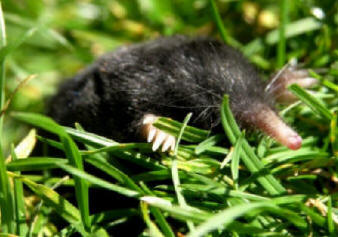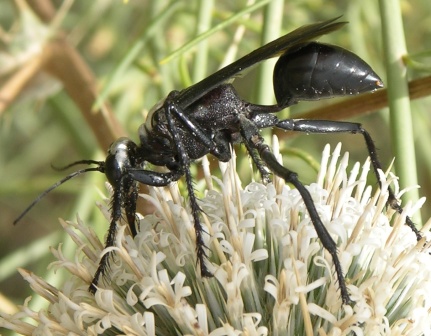< >
AFGHAN ARABIA WILD
WILDLIFE OF AFGHANISTAN WILDLIFE OF SAUDI ARABIA NORTHWEST WILDLIFE ONLINE
The Wonder of Whiskers
John M. Regan
Sometimes
the solution to a problem is so obvious it escapes attention.
Take the case of animal whiskers.
Do you realize how many animals have them?
In the mammal world, in fact, the with whiskered far
outweigh the whiskerless.
Consider for a moment how many mammals are
whiskerless:
Primates, elephants, whales, dolphins…
Not too many more than that.
Sloths and most bats seem to get along without them,
but the list gets pretty thin after that.
Now think how many mammal species have them – just
about every other mammal on earth.
Forget humans, by the way.
That stylish thing we call a moustache is utterly
useless in the realm of real world survival.
With that many whiskers sprouting out in the animal kingdom there
must be some very useful function associated with them and of course there
is.
These particular tactile hairs are called vibrissae.
That they have a special name is really not all that
special.
The hair itself, although distinctly different than mammal
fur, is no more alive than the hair on your own head.
Vibrissae, despite the exotic name, essentially do
nothing more than wave around in the air and bump into things.
The real story is on the other end of the whisker,
the sensitive follicle at its base.
Loaded with
nerve endings the follicle is sensitive to the slightest movement of the
whisker.
Whiskers serve an obvious function for animals that live an underground life
deprived of light.
Moles and other burrowing animals find them vital to
survival as they go about their subterranean existence.
Otters, walruses, and seals use them to find food in
murky water bottoms.
An often repeated function of cat whiskers is that
they tell the animal just how small of a hole it cans squeeze through.
Although there is probably some truth to this
theory, every cat owner in the world has his or her own judgment.
In some animals the whisker is sensitive to even
very small air currents.
Manatees have whiskers that extremely short, stiff, and cover their muzzle
from side to side.
Others, such as chinchillas, have whiskers that
stick out to such an extreme they are referred to as macrovibrisae.
The Arctic Fur Seal is the champion of macrovibirsae.
With whiskers nearly a foot in length that sprout
out and droop down from its face like a thin waterfall the Arctic Fur Seal
may hold the world record for whisker length.
And when it
comes to sensitivity marine mammals are considered to have the most finest
whiskers of all mammals.
This should not be surprising considering the fact
that these animals depend on their whiskers to find food.

Although whisker arrangement may seem random the precise alignment of these hairs are plain to see in the domestic cat. Animals that live an underground life, such as moles ands shrews depend on whiskers, but birds sprout their own variety. The Red-Napped Sap Sucker has rictal feathers protecting its nostrils.
BIRD
WHISKERS?
But are whiskers strictly confined to the mammalian world?
Well, if you expand the definition just a bit –
absolutely not.
Believe it or not birds have whiskers!
They are not composed of stiff hair, of course.
As you would expect bird “whiskers” are specialized
feathers.
Called rictal bristles by ornithologists they grow near the back of
the bird’s bill or appear around the nostrils of some avians such as
woodpeckers and sapsuckers.
Unlike mammal whiskers, however, that generally have
a tactile purpose, the rectal feathers of birds serve a number of functions,
not all of which are known.
Elaborate displays are primarily for mating, but
feathers around the nostrils may protect against inhalation of wood dust,
and some may aid in catching insect prey; sort of a feathery scoop net.
In other cases, such as owls, rictal feathers serve
the same purpose as they do in mammals.
INSECTS, TOO?
If we accept the definition of a whisker as stiff hair attached to a sensor
insects are loaded
with them.
Sensilla,
that is, an insect sense other than one adapted for light detection, are
located throughout an insect’s body and serve a wide variety of functions
from touch to taste.
Hairs, bristles, and setae on an insect body are
noticeable even without the aid of a magnifying glass.
In general they are classified as chemoreceptors or
mechanoreceptors although some may serve both functions at once.
In either case these appendages are connected to
nerve endings just as the whiskers of mammals are.
The mechanoreceptors of insect detect such things as
air movement or pressure upon the exoskeleton.

Mammals, birds, and
insects are all members of the whisker fraternity.
Are there any others?
Of course!
How about earthworms?
These members of the segmented worm family called
Annelids have setae lining their ultra flexible bodies.
Earthworm setae line the animals body and act as
tiny claw anchors.
These dig into the soil as the worms muscular body
contract and expands, enabling the worm to push its way through the earth.
Pick up a good sized earthworm and the setae are
obvious to the touch.
Moles, much to the chagrin of many earthworms, have
hearing very sensitive to the sound produced by this motion.
And let’s not forget catfish and koi…
Sight, smell, taste,
hearing, and touch.
Five different senses common to all living species
and the natural world has developed many different solutions to each.
The environment, however, sometimes makes four out
of the five impossible or impractical.
Sometimes the only thing left is the sense of touch
– and there is the wonder of whiskers.
References:
Vertebrate Biology by Robert T. Orr, Ph.D.
Invertebrate Biology, 6th
Edition, Ruppert and Barnes
Discovery Magazine
http://www.discoverymagazine.com/digger/d92dd/d9212ddb.html
Wkipedia
http://en.wikipedia.org/wiki/Whiskers
Animal Planet:
http://animal.discovery.com/pets/question592.htm
Buzz Green
http://greenbuzzz.net/environment/the-longest-whiskers-in-the-world/
Nature:
http://www.nature.com/news/2008/080314/full/news.2008.674.html
Knoxnews:
http://www.knoxnews.com/news/2006/aug/20/birdlife-purpose-of-birds-whiskers-remains-a/
NC State University:
http://www.cals.ncsu.edu/course/ent425/tutorial/mechano.html
AFGHAN ARABIA WILD
WILDLIFE OF AFGHANISTAN WILDLIFE OF SAUDI ARABIA NORTHWEST WILDLIFE ONLINE
< >